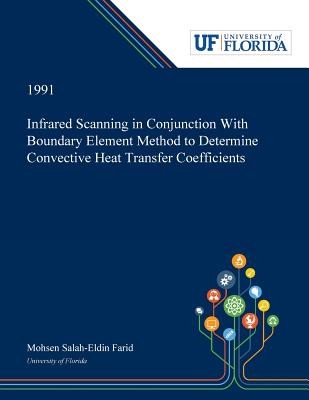
- We will send in 10–14 business days.
- Author: Mohsen Farid
- Publisher: Dissertation Discovery Company
- ISBN-10: 0530005425
- ISBN-13: 9780530005423
- Format: 21.6 x 27.9 x 0.8 cm, softcover
- Language: English
- SAVE -10% with code: EXTRA
Infrared Scanning in Conjunction With Boundary Element Method to Determine Convective Heat Transfer Coefficients (e-book) (used book) | bookbook.eu
Reviews
Description
Abstract:
Infrared scanning was used in conjunction with the boundary element method to determine the convective heat transfer coefficient for free convection for a rough, horizontal, circular cylinder in ambient air as an example of the application. The infrared scanning was used to measure the surface radiosity of the cylinder, which was in turn used to determine the surface temperature. This temperature was then used as input in a real-variable boundary element analysis to determine the surface heat flux. Finally, the radiation effect was accounted for and the net heat flux was evaluated at the surface to determine the convective coefficient in the Nusselt number. Dissertation Discovery Company and University of Florida are dedicated to making scholarly works more discoverable and accessible throughout the world. This dissertation, "Infrared Scanning in Conjunction With Boundary Element Method to Determine Convective Heat Transfer Coefficients" by Mohsen Salah-Eldin Farid, was obtained from University of Florida and is being sold with permission from the author. A digital copy of this work may also be found in the university's institutional repository, IR@UF. The content of this dissertation has not been altered in any way. We have altered the formatting in order to facilitate the ease of printing and reading of the dissertation.EXTRA 10 % discount with code: EXTRA
The promotion ends in 20d.23:16:36
The discount code is valid when purchasing from 10 €. Discounts do not stack.
- Author: Mohsen Farid
- Publisher: Dissertation Discovery Company
- ISBN-10: 0530005425
- ISBN-13: 9780530005423
- Format: 21.6 x 27.9 x 0.8 cm, softcover
- Language: English English
Abstract:
Infrared scanning was used in conjunction with the boundary element method to determine the convective heat transfer coefficient for free convection for a rough, horizontal, circular cylinder in ambient air as an example of the application. The infrared scanning was used to measure the surface radiosity of the cylinder, which was in turn used to determine the surface temperature. This temperature was then used as input in a real-variable boundary element analysis to determine the surface heat flux. Finally, the radiation effect was accounted for and the net heat flux was evaluated at the surface to determine the convective coefficient in the Nusselt number. Dissertation Discovery Company and University of Florida are dedicated to making scholarly works more discoverable and accessible throughout the world. This dissertation, "Infrared Scanning in Conjunction With Boundary Element Method to Determine Convective Heat Transfer Coefficients" by Mohsen Salah-Eldin Farid, was obtained from University of Florida and is being sold with permission from the author. A digital copy of this work may also be found in the university's institutional repository, IR@UF. The content of this dissertation has not been altered in any way. We have altered the formatting in order to facilitate the ease of printing and reading of the dissertation.

Reviews